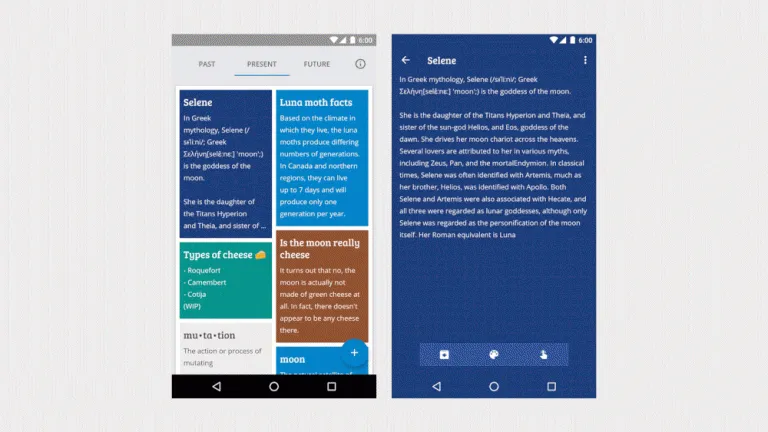· 2 min read Posted by touchlab
Meet Selene: an open-source mutative app and the next phase for Project Phoebe

Back in December, I introduced Project Phoebe, a first (open source) step toward mutative design.
Mutative design, if you haven’t had a chance to read the original post, is a theoretical design methodology for creating interfaces and experiences that are born, live, and evolve with the user’s reality. Essentially, digital interfaces that mutate.
If a user has low vision, isn’t familiar with technology, lives with changing lighting conditions, low data, or has low physical acuity, the design would automatically adapt to that, going beyond responsive design to something that makes UI accessible and engaging for every single user.
Today, to coincide with my session at Droidcon San Francisco, I’m excited to reveal Selene, a basic sample app to demonstrate some early concepts of mutative design.
 Selene’s contrast mutation
Selene’s contrast mutation
The app, made in collaboration with developer Francisco Franco, demonstrates two mutations so far: a contrast mutation that responds automatically to changing light conditions, and a “helper” mutation that guides users to creating a new note if they need help.
It’s still early days, but mutative design is a quickly evolving idea, and hopefully simple examples like Selene will help developers and designers get on board.
You can find the open-source code and design assets at source.phoebe.xyz or read the new post to coincide with my DCSF session at hello.phoebe.xyz.
To try Selene for yourself, join the beta program at selene.phoebe.xyz